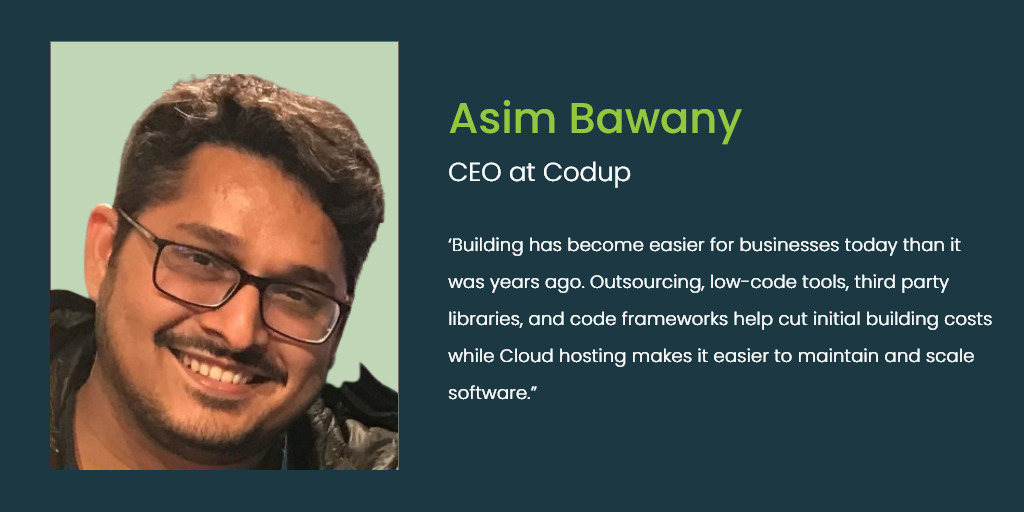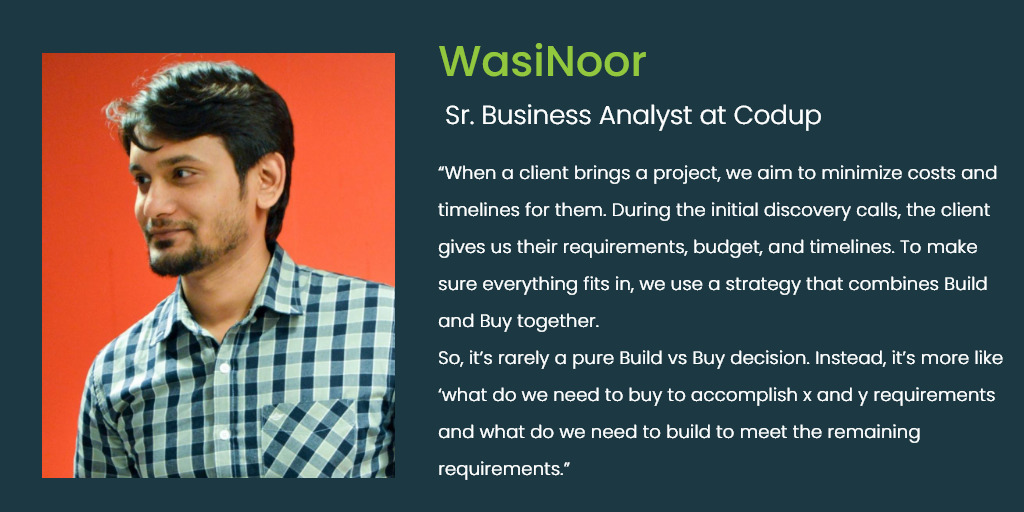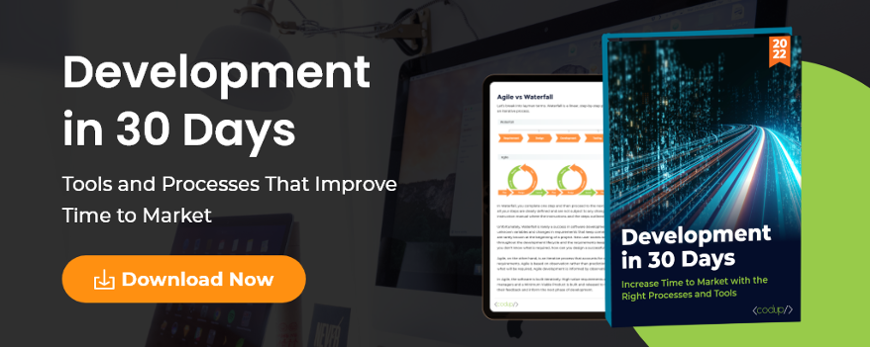Re-Thinking: How Outsourcing Has Changed Build vs Buy Perspectives

Build vs Buy? Statistica reported that businesses in 2021 were using an average of 110 software applications. Should they build those apps or buy them? Thanks to modern technology and business services like outsourcing and staff augmentation, there may be a new answer today.
Table of Contents:
- Buying is No Longer the Default in All Cases
- Creating the Best Build + Buy Strategy
- Build vs Buy Case Study: GovtLives.com – Build + Buy Strategy to Increase Time to Market
- Never Reinvent the Wheel
- Build vs Buy Case Study: When Reinventing Became Necessary
- Consider the Opportunity Cost of Building Software
- If the Software Helps you Differentiate: Build
- Consider the Hidden Cost of Off-the-Shelf Software: The Cost of Adjusting Business Operations
Buying is No Longer the Default in All Cases
For a long time, one simple rule guided all decisions: build only when it’s not already available elsewhere. However, thanks to cloud technology, agile practices, and development outsourcing, perspectives around this perennial question have changed.

Creating the Best Build + Buy Strategy
When budget and timelines are important, a strategy that combines both build plus buy seems like the most viable option for a business. Buying off-the-shelf software and custom coding only what is necessary makes sense for a business in its early stage. It helps them get up to speed and gain a larger market share by being out there faster than any of their competitors are.

Build vs Buy Case Study: GovtLives.com – Build + Buy Strategy to Increase Time to Market
GovtLives.com was at the idea stage when they approached us. James Davis, the founder, wanted to get to market fast and carve out a place for the business before anyone else does. Funds were also limited at that point. The idea was to create a listing and social media site where government employees could post listings, interact with others, and swap their jobs through an algorithm that worked similarly to a dating site.
When working on their project scope, we realized that GovtLives.com could get all the functionality except job swapping by using WordPress, WooCommerce, and several off-the-shelf WordPress plugins. For the feature of job swapping, we proposed building a custom WordPress plugin and integrating it with other pieces of software we were using. In this case, our strategy involved building only what wasn’t easily available and buying what was. We then integrated all of the pieces together to create a usable and functional product that fit in our client’s budget and timeline.
Never Reinvent the Wheel
If you need an online store, building an eCommerce platform from scratch makes no sense. When Tobe Lutke decided to build Shopify, it was because a user-friendly eCommerce platform wasn’t available at that time. As an example, it doesn’t make sense for anyone to build something that’s similar to Shopify to run their online store – unless they plan to compete with Shopify.
“It takes millions of dollars and large teams of developers to achieve the level of functionality that commercially available software provides. And if someone has already done that, why reinvent the wheel?”
Asim Bawany, CEO of Codup

Build vs Buy Case Study: When Reinventing Became Necessary
Breez, a CBD manufacturer, needed a warehouse management application but was having trouble finding a vendor that wasn’t concerned about the regulations in CBD businesses. Breez was left out of options. Reinventing and building a warehouse management application from scratch was the only option for them. By outsourcing their project though, Breez was able to cut costs. Our agile development processes have also allowed them to increase their time-to-market.
Consider the Opportunity Cost of Building Software
A build vs. buy decision always starts with a cost analysis. But when analyzing costs, most people make the mistake of considering the sunk cost of building software. If you already have in-house developers, you aren’t paying any more to them to build the software your business needs as they’re already on your payroll. That’s your sunk cost. Sunk cost should never be considered in a build vs buy decision. Opportunity Cost should be.
“When we started Codup, we made the mistake of building an HRM software. Since we already had an in-house team of developers, we thought it was more cost-effective for us to build. It was a mistake because we didn’t consider the opportunity cost. We could have earned thousands of dollars in profit by engaging our resources on providing services to other clients instead of trying to reinvent the wheel.”
Asim Bawany, CEO of Codup

If the Software Helps you Differentiate: Build
When a project differentiates or is core to your business, use a build strategy so you can get maximum control over the code. If performance and scalability of the software are critical to the business, it’s not advisable to bloat your software with unwanted features and chain it up with other third-party dependencies.
Integrating too many third-party tools to create the functionality required leads to inevitable trouble down the road. Every time the third-party software gets updated, you run the risk of breaking your system. If you think you can create a masterpiece by integrating multiple pieces of software together, think again. It often becomes a giant hairball that’s impossible to untangle – potentially leading to some dangerous cases of lock-in.

Consider the Hidden Cost of Off-the-Shelf Software: The Cost of Adjusting Business Operations
If an established business has already got its own processes – common with most digital transformation projects – buying off-the-shelf software incurs the cost of adjusting your business operations to fit the workflows of the software.
Development outsourcing creates room for more perspectives and gives tech leaders more leeway in their build and buy decisions.
So now, when someone asks, “Should we build or buy?”, the answer can be: “Why not do both?”
Want custom software development? Let’s discuss.



